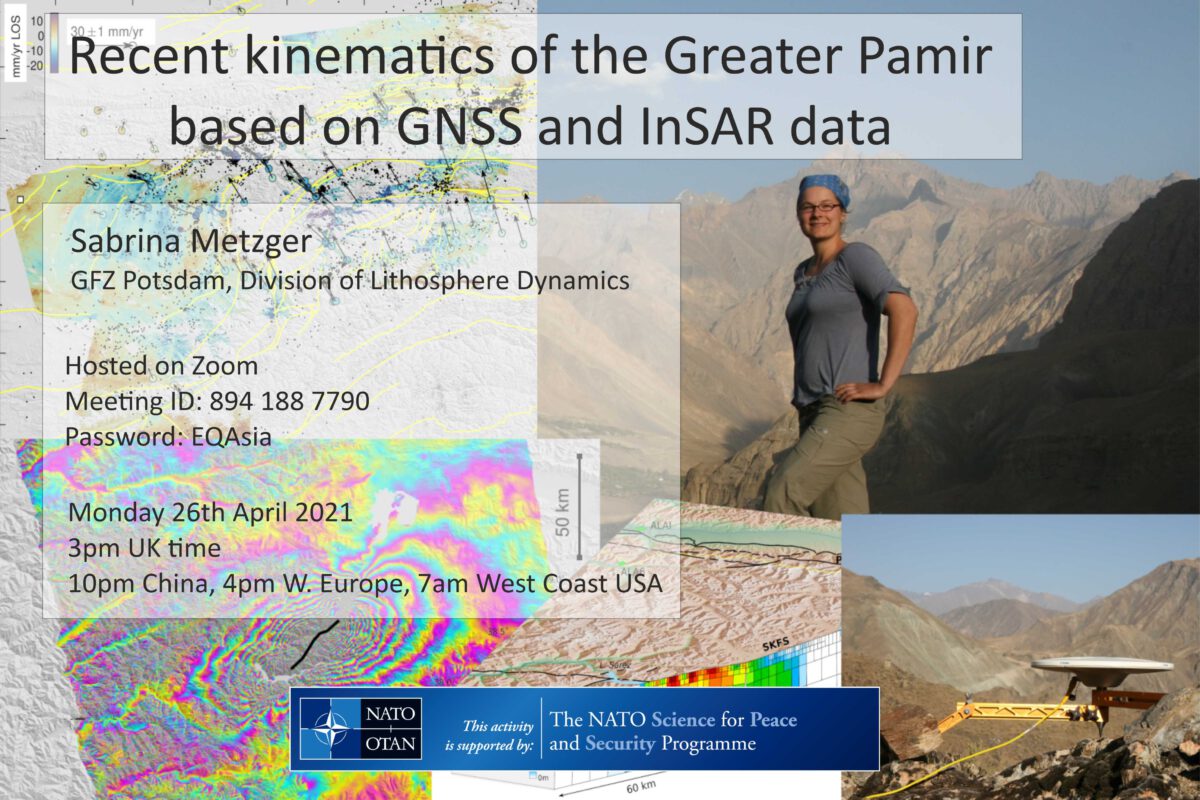Ben Johnson, a PhD student from the University of Oxford, describes his experiences from fieldwork over the summer of 2021. Read on to find out more about the Alai valley, glacial histories, and shortening across the northern margin of the Pamir.

Ben Johnson, a PhD student from the University of Oxford, describes his experiences from fieldwork over the summer of 2021. Read on to find out more about the Alai valley, glacial histories, and shortening across the northern margin of the Pamir.


The South Caspian Basin (SCB) is an aseismic block that moves independently to its surroundings. Together with the Arabia-Eurasia collision, it controls the active tectonics of Turkmenistan. The directions, rates, and rotation poles of the SCB relative to Iran and Eurasia are not well resolved. In a new paper recently published in TECTONICS, we constrain the motion of the SCB by measuring the slip rate of the Main Kopeh Dagh Fault (MKDF) in Turkmenistan. Here’s what we found:
The COMET Central Asia Fault Database integrates decades of fault mapping and field-studies by researchers from the UK NERC Centre for Observation and Modelling of Earthquakes, Volcanoes and Tectonics (COMET), and global collaborators.
Central Asia is home to one of the world’s great mountain ranges–the Tien Shan–which is formed by vigorous crustal convergence across a multitude of tectonic faults. Here we describe the motivation to assemble the database and the choices that we have made in its structure, which are based on utility, necessity, and limitations in available information. We are working towards a full public release of the dataset, so keep an eye out!
On 28 June, 2021, Marc Jolivet from Geosciences Rennes gave the third talk of our lecture series on the tectonics of Central Asia. The topic was The Mesozoic and Cenozoic tectonic, topographic, and climate evolution of the Tian Shan region: an insight from geomorphology and sediment analysis. In case you missed Marc’s presentation, here’s the video.
Watch this space for future talks, always on the last Monday of every second month, and follow us on Twitter for updates: https://twitter.com/QuakesCentAsia
On 26 April, 2021, Sabrina Metzger (GFZ Potsdam) gave the second talk of our lecture series on the tectonics of Central Asia. In case you missed Sabrina’s presentation, here’s the video.
Watch this space for future talks, always on the last Monday of every second month, and follow us on Twitter for updates: https://twitter.com/QuakesCentAsia

In the framework of our NATO-funded project SPS G5690 – “Earthquake Hazard and Environmental Security in Kazakhstan and Kyrgyzstan” we will run an ~1 hr online webinar. Sabrina Metzger from GFZ Potsdam, Division of Lithosphere Dynamics, will talk about Recent kinematics of the Greater Pamir based on GNSS and InSAR data. The webinar is open for everyone interested and will be held via zoom (https://uni-jena-de.zoom.us/j/8941887790 Meeting-ID: 894 188 7790; Password: EQAsia).
Date: 26 April, 2021
Time: 3 pm UK time (3 pm London; 4 pm Berlin & Paris; 10 pm Beijing; 7 am San Francisco)